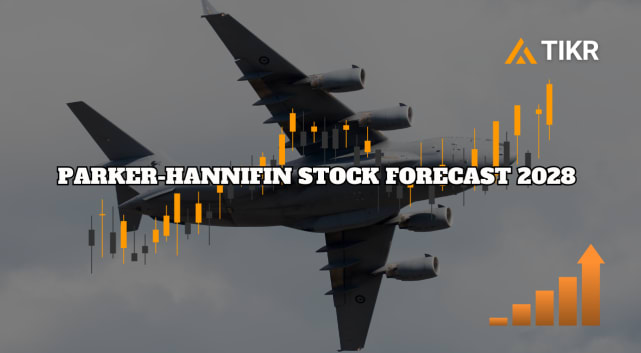After a volatile year marked by labour unrest, higher operating costs, and softening margins, Air Canada (AC) is facing investor turbulence of its own. The stock has fallen nearly 18% year-to-date, erasing much of the momentum gained after its post-pandemic recovery. For Canada’s flag carrier, 2025 has proven to be a test of resilience, financially, operationally, and strategically.
Yet Air Canada remains a fundamentally strong airline. The company entered the year with one of the industry’s best balance sheets, a well-diversified business model spanning premium passenger travel, loyalty programs, and cargo operations, and ambitious long-term targets for profitability and free cash flow through 2028. Those pillars have helped cushion short-term headwinds that would have knocked a lesser airline off course.
CEO Michael Rousseau and his management team continue to stress discipline, redirecting capacity toward profitable routes, maintaining tight control over liquidity, and investing in high-margin segments like Aeroplan and Air Canada Vacations. The result is a business that’s weathering the storm rather than succumbing to it. The question for investors now is whether 2026 could mark the start of renewed earnings growth after a bruising year for Canada’s top airline.

Financial Story
Air Canada’s 2025 financials tell a story of steady operations overshadowed by external challenges. The airline started the year with first-quarter revenues of $5.2 billion, down 1% from a year earlier, as softer winter demand and a weaker Canadian dollar weighed on results. Adjusted EBITDA declined to $387 million, resulting in a 7.4% margin, while free cash flow of $831 million showed liquidity generation remained strong despite higher capital expenditures.
In the second quarter, performance improved modestly. Revenue rose 2% to $5.63 billion, operating income reached $418 million, and adjusted EBITDA hit $909 million, with a healthy 16.1% margin. Air Canada also completed a $500 million share buyback, reflecting confidence in its balance sheet and long-term cash flow profile.
But the recovery was interrupted in August by a labour disruption involving the Canadian Union of Public Employees (CUPE). More than 3,200 flights were cancelled, costing the company an estimated $375 million in operating income and EBITDA. As a result, full-year guidance was trimmed: adjusted EBITDA is now expected to be between $2.9 billion and $3.1 billion, down from the previous $3.2–$3.6 billion range, and free cash flow is likely to be near break-even.
| Metric (C$) | Q1 2025 | Q2 2025 | Full-Year 2025 Guidance | 2024 Actual |
|---|---|---|---|---|
| Operating Revenue | $5.20B | $5.63B | — | $22.26B |
| Adjusted EBITDA | $387M | $909M | $2.9B–$3.1B | $3.59B |
| Adjusted EBITDA Margin | 7.4% | 16.1% | ~14–15% | 16.0% |
| Free Cash Flow | $831M | $183M | -$50M to $150M | $1.29B |
| Adjusted CASM | 15.27¢ | 14.4¢ | 14.6–14.7¢ | 13.8¢ |
| Net Debt | $4.7B | $4.8B | — | $4.9B |
See Air Canada’s full financial results & estimates (It’s free) >>>
1. Labor Headwinds and Cost Pressures Dominate 2025
The strike by Air Canada’s cabin crew in August disrupted flight schedules, customer confidence, and third-quarter profitability. Although operations quickly normalized, the lost revenue and one-time labour costs effectively erased a full quarter of earnings momentum.
Even with these pressures, Air Canada’s balance sheet remains a source of strength. The company ended Q2 with $8.4 billion in liquidity and a 1.4x leverage ratio, among the lowest in the industry. That financial flexibility has allowed management to stay the course on long-term investments in fleet modernization and customer experience.
2. Diversified Segments Support Margins
While passenger yields have softened slightly, Air Canada continues to benefit from its diversified business mix. Premium cabin and international long-haul traffic rose 5% year-over-year in the second quarter, helping offset domestic weakness.
Non-passenger businesses, Aeroplan, Air Canada Vacations, and Air Canada Cargo, also played a crucial stabilizing role. Each division contributed to adjusted EBITDA growth, with Aeroplan in particular driving engagement and ancillary revenue through strong loyalty redemption activity.
Recognition from Skytrax as North America’s Best Airline for 2025 further highlights the company’s ability to maintain service quality amid turbulence. As global travel normalizes, these higher-margin segments are expected to play an increasingly central role in restoring profitability and shareholder value.
Value airline stocks in less than 60 seconds with TIKR’s new Valuation Model (It’s free) >>>
3. Outlook: 2026 Recovery and Long-Term Ambitions
Looking ahead, management expects 2026 to be a year of gradual recovery. With capacity set to grow modestly after a constrained 2025, Air Canada is forecasting improving yields and the return of positive free cash flow as labour disruptions fade and cost structures normalize.

Longer-term, the airline continues to target 17%+ EBITDA margins by 2028 and 5% free cash flow margins, supported by disciplined fleet growth, technology investments, and sustained demand for premium and international travel. The company’s 2030 aspirations include maintaining leverage below 1.5x and generating a 12% return on invested capital, positioning it among the most efficient carriers globally.
Execution risk remains, especially in a high-cost, competitive North American market, but Air Canada’s fundamentals suggest a measured rebound once macro and operational conditions stabilize.
The TIKR Takeaway
Air Canada’s 2025 results underscore a company navigating through turbulence with discipline. The combination of strong liquidity, premium revenue streams, and effective cost management prevented a difficult year from becoming a damaging one. Operational excellence and brand strength continue to set the airline apart, while management’s reaffirmed long-term targets provide a clear roadmap toward profitability and growth.
With the stock trading near multi-quarter lows, much of the near-term pessimism already appears priced in. As labour disruptions fade and costs stabilize, 2026 could mark the beginning of a steady rebound in margins and cash flow. For investors who can look past short-term volatility, Air Canada offers a patient path to recovery backed by durable fundamentals and an improving competitive position.
Should You Buy, Sell, or Hold Air Canada’s Stock in 2025?
At around US$13 per share, Air Canada trades at roughly 5x forward EV/EBITDA, a steep discount to peers like Delta Air Lines (8x) and United Airlines (7x). The valuation reflects temporary setbacks rather than structural weakness, suggesting meaningful upside if profitability rebounds in 2026.
For investors with a medium-term horizon, the risk/reward balance looks favorable. Liquidity remains high, debt leverage is manageable, and management’s disciplined capacity strategy provides a cushion against further shocks.
For now, Air Canada is likely worth holding, but you might see it as a buy if early 2026 results confirm margin recovery and renewed free cash flow growth.
See analysts’ growth forecasts and price targets for Air Canada (It’s free!) >>>
AI Compounders With Massive Upside That Wall Street Is Overlooking
Everyone wants to cash in on AI. But while the crowd chases the obvious names benefiting from AI like NVIDIA, AMD, or Taiwan Semiconductor, the real opportunity may lie in the AI application layer, where a handful of compounders are quietly embedding AI into products people already use every day.
TIKR just released a new free report on 5 undervalued compounders that analysts believe could deliver years of outperformance as AI adoption accelerates.
Inside the report, you’ll find:
- Businesses already turning AI into revenue and earnings growth
- Stocks trading below fair value despite strong analyst forecasts
- Unique picks most investors haven’t even considered
If you want to catch the next wave of AI winners, this report is a must-read.
Click here to sign up for TIKR and get your free copy of TIKR’s 5 AI Compounders report today.
Looking for New Opportunities?
- See what stocks billionaire investors are buying so you can follow the smart money.
- Analyze stocks in as little as 5 minutes with TIKR’s all-in-one, easy-to-use platform.
- The more rocks you overturn… the more opportunities you’ll uncover. Search 100K+ global stocks, global top investor holdings, and more with TIKR.
Disclaimer:
Please note that the articles on TIKR are not intended to serve as investment or financial advice from TIKR or our content team, nor are they recommendations to buy or sell any stocks. We create our content based on TIKR Terminal’s investment data and analysts’ estimates. Our analysis might not include recent company news or important updates. TIKR has no position in any stocks mentioned. Thank you for reading, and happy investing!








